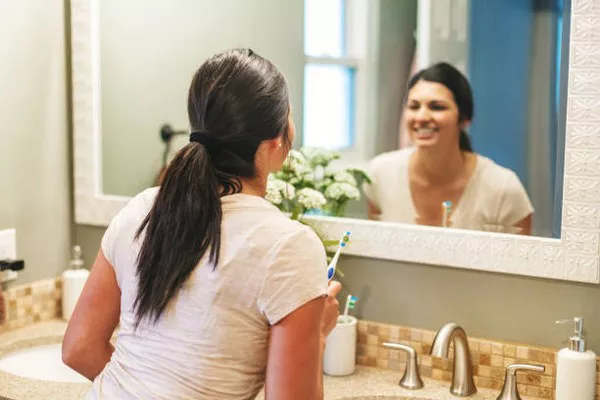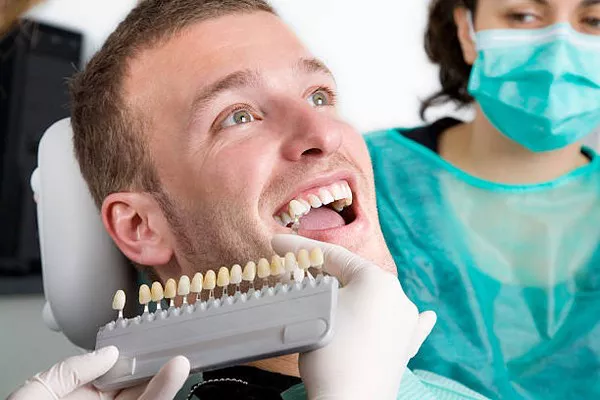Yellow teeth can be a source of embarrassment and concern for many people. However, understanding the underlying causes and available solutions can help alleviate these concerns. This article delves into the reasons behind yellow teeth, common causes, prevention tips, treatment options, myths versus facts, and when to seek professional dental advice.
Explanation of Yellow Teeth
Yellow teeth can be due to various factors, including genetics, diet, oral hygiene, and aging. The color of teeth varies from person to person and can change over time due to a variety of factors. The outermost layer of teeth, called enamel, can wear down or become stained, revealing the yellowish dentin underneath. Let’s explore these factors in more detail.
Genetics
Genetics play a significant role in determining the natural color of your teeth. Just as you inherit traits like hair and eye color from your parents, you also inherit the thickness and translucency of your enamel. Thicker enamel appears whiter, while thinner enamel allows more of the yellowish dentin to show through.
Diet
Certain foods and beverages are notorious for staining teeth. Coffee, tea, red wine, and sodas contain chromogens, which are compounds with strong pigments that cling to the enamel. Acidic foods and drinks can also erode enamel, making it more susceptible to staining.
Oral Hygiene
Poor oral hygiene can lead to plaque and tartar buildup on the teeth. Plaque is a sticky film of bacteria that forms on the teeth, and if not removed through brushing and flossing, it hardens into tartar. Tartar can be yellow or brown and can only be removed by a dentist.
Aging
As we age, the enamel on our teeth naturally wears down, revealing more of the dentin beneath. Additionally, the cumulative effects of diet and oral hygiene practices over the years contribute to the yellowing of teeth.
Common Causes
Understanding the common causes of yellow teeth can help in taking preventive measures and seeking appropriate treatments. Here are some of the most prevalent factors:
Staining Foods and Beverages
As mentioned earlier, foods and drinks like coffee, tea, red wine, and sodas are significant contributors to tooth staining. Other culprits include berries, tomato sauce, and curry. These items contain strong pigments that adhere to the enamel, causing discoloration over time.
Tobacco Use
Smoking or chewing tobacco is another major cause of yellow teeth. Nicotine and tar in tobacco products stain the teeth and contribute to the buildup of tartar, leading to further discoloration.
Certain Medications
Some medications can cause teeth to become yellow. Tetracycline antibiotics, when taken during childhood, can lead to intrinsic staining of the teeth. Antihistamines, high blood pressure medications, and antipsychotic drugs can also contribute to yellowing teeth.
Fluorosis
Fluorosis occurs when children consume too much fluoride during the years when their teeth are developing. This can result in white spots or streaks on the teeth, which can sometimes turn yellow or brown over time.
Prevention Tips
Preventing yellow teeth involves adopting good oral hygiene practices, making dietary changes, and avoiding habits that contribute to staining. Here are some effective tips to keep your teeth white:
Improve Dental Hygiene
Brushing your teeth at least twice a day with fluoride toothpaste is crucial for maintaining oral health and preventing yellowing. Flossing daily helps remove plaque between teeth that brushing might miss. Using an antiseptic mouthwash can also help reduce plaque and bacteria.
Regular Dental Cleanings
Visiting your dentist for regular cleanings is essential. Professional cleanings remove tartar and surface stains that cannot be eliminated through regular brushing and flossing. It’s recommended to have a dental cleaning every six months.
Dietary Adjustments
Limit the consumption of staining foods and beverages. When you do consume them, try to brush your teeth or rinse your mouth with water shortly afterward. Using a straw for beverages like coffee and tea can help minimize contact with your teeth.
Quit Smoking
If you smoke or use other tobacco products, quitting can significantly improve the appearance of your teeth and overall oral health. There are many resources available to help you quit smoking, including counseling, medications, and support groups.
see also:How To Get Rid Of Yellow Plaque Behind Teeth
Treatment Options
If your teeth are already yellow, there are several treatment options available to restore their whiteness. These range from natural home remedies to professional dental procedures.
Natural Home Remedies
- Baking Soda and Hydrogen Peroxide: Mixing baking soda with hydrogen peroxide creates a paste that can help remove surface stains. However, it’s important to use this method sparingly to avoid damaging the enamel.
- Oil Pulling: Swishing coconut oil in your mouth for 15-20 minutes can reduce bacteria and plaque, leading to whiter teeth.
- AppleCider Vinegar: Diluting apple cider vinegar with water and using it as a mouthwash can help whiten teeth. However, it should be used cautiously due to its acidity.
Over-the-Counter Products
- Whitening Toothpaste: Whitening toothpaste contains mild abrasives that help remove surface stains. Some also contain chemical agents that provide additional whitening benefits.
- Whitening Strips and Gels: These products contain peroxide-based bleaching agents that can effectively whiten teeth. They are applied directly to the teeth and used for a specified period.
- Whitening Trays: Over-the-counter whitening trays are filled with a bleaching gel and worn over the teeth. While not as effective as professional treatments, they can still provide noticeable results.
Professional Dental Procedures
- In-Office Bleaching: Dentists offer professional bleaching treatments that use a higher concentration of bleaching agents compared to over-the-counter products. These treatments provide faster and more dramatic results.
- Take-Home Whitening Kits: Dentists can also provide custom-fitted trays and professional-grade whitening gel for at-home use. These kits are more effective than over-the-counter options.
- Laser Whitening: This advanced procedure involves applying a bleaching agent to the teeth and then using a laser to enhance the whitening process. It provides immediate and significant results.
see also:Why Do Clear Braces Turn Yellow
Myths vs. Facts
There are many myths surrounding yellow teeth and their treatment. Here, we dispel some of the common misconceptions and provide factual information.
Myth: All Yellow Teeth are Unhealthy
Fact: Not all yellow teeth are a sign of poor oral health. Teeth can naturally have a yellowish tint due to genetics or aging. However, yellowing caused by plaque buildup or staining can indicate a need for better oral hygiene.
Myth: Whitening Toothpaste Can Remove All Stains
Fact: Whitening toothpaste is effective at removing surface stains but may not be able to address deeper stains caused by certain medications or excessive fluoride exposure.
Myth: Professional Whitening is Bad for Your Teeth
Fact: When performed by a qualified dentist, professional whitening treatments are safe and effective. Dentists take precautions to protect your gums and minimize sensitivity.
Myth: Home Remedies are Just as Effective as Professional Treatments
Fact: While some home remedies can help whiten teeth, they are generally not as effective or fast-acting as professional treatments. Additionally, improper use of home remedies can sometimes damage the enamel.
When to See a Dentist
It’s important to consult with a dentist if you notice persistent yellowing of your teeth, especially if it’s accompanied by other symptoms like pain, sensitivity, or discomfort. A dentist can determine the underlying cause and recommend appropriate treatment.
Signs You Should See a Dentist
Persistent Discoloration: If your teeth remain yellow despite good oral hygiene practices, a dentist can evaluate the cause and suggest treatments.
- Pain or Sensitivity: Yellow teeth accompanied by pain or sensitivity may indicate underlying dental issues such as cavities or gum disease.
- Visible Tartar: If you can see tartar buildup on your teeth, professional cleaning is necessary to remove it.
- Staining from Medications: If you suspect that medications are causing your teeth to yellow, a dentist can offer solutions to mitigate the discoloration.
Conclusion
Yellow teeth can result from a variety of factors, including genetics, diet, oral hygiene, and aging. Understanding these factors can help you take preventive measures and seek appropriate treatments. While there are many myths about yellow teeth, the facts reveal that not all yellowing is a sign of poor health and that effective treatment options are available. If you’re concerned about the color of your teeth, consulting with a dentist can provide peace of mind and a path to a brighter smile.
FAQs about Yellow Teeth
1. Can yellow teeth become white again?
Yes, yellow teeth can become white again through various methods. There are several ways to whiten teeth, including professional dental treatments, over-the-counter whitening products, and natural remedies. Professional treatments, such as in-office bleaching and custom-fitted whitening trays, are usually the most effective and can significantly lighten the color of your teeth. Over-the-counter products like whitening toothpaste, strips, and gels can also help, although they may take longer to show results. Additionally, natural remedies like brushing with baking soda or using hydrogen peroxide can provide some whitening effects, but these should be used with caution to avoid damaging the enamel.
2. Is it normal to have yellowish teeth?
Yes, it is normal for teeth to have a yellowish tint. The natural color of teeth varies from person to person and is influenced by factors such as genetics, age, and diet. The dentin, which is the layer beneath the enamel, is naturally yellow, and as the enamel wears down over time, the yellow color can become more visible. Consuming foods and drinks like coffee, tea, wine, and certain fruits can also stain the enamel, making teeth appear more yellow. Additionally, lifestyle habits such as smoking can contribute to yellowing teeth.
3. How to fix yellow teeth?
Fixing yellow teeth involves several approaches:
- Professional Whitening: Visiting a dentist for in-office bleaching or getting a custom-made take-home whitening kit.
- Over-the-Counter Products: Using whitening toothpaste, strips, gels, and mouthwashes available in pharmacies.
- Good Oral Hygiene: Brushing twice a day, flossing daily, and using mouthwash to prevent plaque buildup and stains.
- Dietary Changes: Avoiding foods and drinks that stain teeth, such as coffee, tea, red wine, and certain berries.
- Regular Dental Cleanings: Scheduling regular dental check-ups and cleanings to remove surface stains and tartar.
4. Why are my teeth yellow at 16?
Yellow teeth at 16 can result from several factors:
- Genetics: Some people naturally have yellower teeth due to their genetic makeup.
- Diet: Consuming foods and drinks that stain teeth, such as soda, tea, coffee, and certain fruits.
- Oral Hygiene: Poor oral hygiene can lead to plaque and tartar buildup, causing teeth to appear yellow.
- Medications: Certain medications, such as tetracycline antibiotics, can cause teeth discoloration if taken during childhood.
- Fluorosis: Excessive fluoride intake during the early years of life can lead to fluorosis, which manifests as yellow or brownish stains on the teeth.
You Might Be Interested In





























